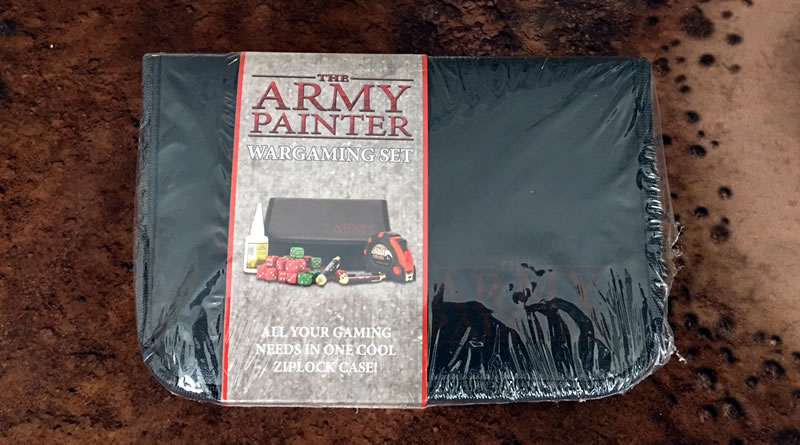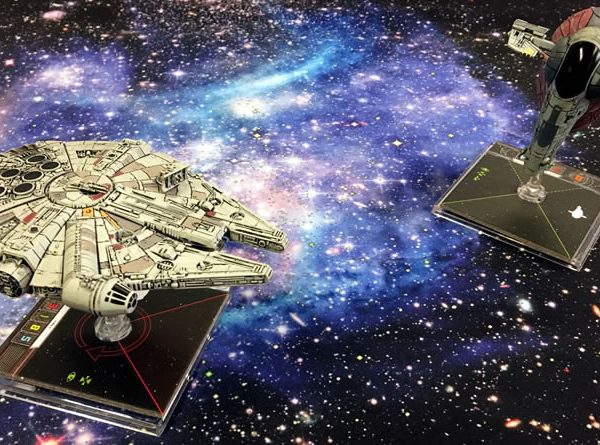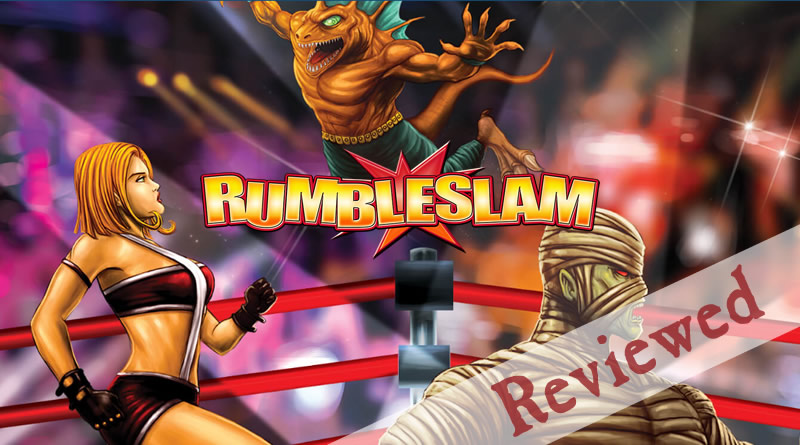Mars Attacks, as a thing, came to life in 1962 as a range of trading cards released by Topps. Although very popular, they had to stop being produced after a very loud outcry by parents who started to properly look at what their children were collecting. When you look at some of the artwork on the cards it is amazing that the project every left the ground, never mind me something that children collected. For example, card number 60 is titled “Unspeakable Experiments” and shows a guy having his heart cut out while still awake by three martians with a scantily clad woman screaming from a cell as she watches it all. As for card number 59, “Blasted Into Oblivion”…well!
Fast forward thirty-four years to 1996, and Tim Burton’s movie of the same name was released, completely inspired by the original trading cards and it was a damn fine feast of postmodern sci-fi. Possibly riding on the wave of interest that came about after 2012’s fiftieth anniversary of the original trading card release, along came Mantic Games with the release of their very fine Mars Attacks miniatures game. This was originally launched via Kickstarter in 2013 and successfully delivered and also released as a retail game later on in 2014 and still available to this day with a number of expansions and add-on’s also available.
What’s in the box?
- 1 Martian General (General Tor)
- 20 Martian Grunts with detachable plastic helmets
- 9 Civilian Heroes of Greenville
- 10 US Army Troopers
- Quick-assemble Ruined Buildings scenery
- Urban Accessory Set (signposts, rubbish bins, etc)
- Fold-out paper Battle Mat
- Rulebook (which is beautiful)
- Hero Tracker card
- 54 Game Cards
- Game & Event Counters
- Six Eight-sided Dice
Basic Game Overview
Mars Attacks – The Miniatures Game is very close to being a boardgame, but is actually a miniatures game (I guess there is a clue in the title of the game!). The Martians have landed in the quiet US town of Greenville and have started destroying everything and slaughtering everyone. It is up to a brave squadron of US Army troops to stop them with a little bit of help from some even braver locals and the occasional wildcard hero who turns up to help save the day.
The game takes place on the included game mat, which represents a T-Junction in the Greenville town centre. The included scenery pack has enough pieces in there to create a partially destroyed urban landscape and this is important as the game revolves around true line of sight mechanics, which will be explored further down.
The play mat has a grid of large squares on it and this is to aid with the simplicity of playing the game. There is no tape measure required for this miniatures game and the basic principle of the game is really easy. That said, if you are used to larger scale wargames with lots of rules and the need to measure everything you want to do (move, shoot, etc) then it might feel a bit weird at first playing something this straight forward.
Mars Attacks is a two-player game, with one player taking control of the invading Martians and their opponent looking after the army and civilian force. Players can activate up to two models per turn and each model can perform two actions per turn, such as Move, Aim, Shoot etc.
The main actions of Move and Shoot are supported by the aforementioned grid on the play mat. Moving from one square into another adjacent square is one Move, and therefore one action. Moving two squares is two Moves and two actions. In relation to the models the squares on the grid are quite large and you can move your model to any part of a new square that it is moving into. Finding any available cover inside a square is an important part of the game so it is best not to just plop your model anywhere but to consider the line of sight from your enemy’s models.
The squares on the grid are also used when any shooting is to be done. The ranges of the weapons that the models carry are measured in squares. For example, a normal Martian Disintegration Rifle can fire up to four squares. A US Army Carbine Rifle can fire up to six squares. There are no modifiers or penalties for being close or far away from your target…you will spot a theme that everything in this game is very simple. This approach to game design is really refreshing and a bit of an antidote to the strict measurement and movement rules of many other tabletop games where you have to get the tape measure out every time you want to do something.
As previously mentioned, cover is important in the game because of the true line of sight rule. This means that you have to stoop down and look across the board from the actual eye-line of the miniatures on the table. Hide behind terrain and scenery whenever you can…it’s the only way to survive sometimes, especially if you are playing the human force! That said, if any part of a model can be ‘seen’ by an opposing model then a shot is allowed. Even the tiniest end of a gun counts as a model being visible. Although that may seem like it makes partial cover irrelevant you do still get some benefit of being partially behind terrain.
While tape measures are redundant, there is still a role (roll?) for dice. This is also very simple; you always start with three 8-sided dice. Sometimes there are bonuses that can add dice to the initial three that you roll. If you are going to perform a Shooting action, and your model can see ALL of its intended target then you receive an extra dice to roll, along with your original three dice. If the target is partially in cover then no extra dice is given…so, partial cover does have a benefit.
If you haven’t performed any other action with the model you are about to shoot with then you can choose to Aim first, and this gives you an extra dice to add to the shoot roll to reflect the improved accuracy.
The bonus dice do stack. For example, if you use an Aim action to shoot at a model that doesn’t have any benefit of cover then you get your three dice, plus an extra one for Aim and an extra one for no cover, so five dice in total.
The shooting player rolls their dice to see how many hits they make, and then the defending player rolls their survive dice to see if they managed to dodge out of the way of the opposing fire. Again, the defending player has three dice to roll. Every dice roll starts with three dice. There are no rules or events that take dice away, only benefits that can add dice. The game uses eight-sided dice and whenever an ‘8’ is rolled the exploding dice rule kicks in. Basically, roll an ‘8’ and that hit or defence is scored and you get to roll the dice again. There is no limit to this rule, so if you roll three 8’s in a row then you get the extra three positive results. This can mean that when everything seems to be up against your model the appearance of a solitary 8 amongst other dice that have ‘failed’ can ultimately lead to success or survival if you manage to roll another 8 as your third roll might produce the 4+ or 5+ that you need!
Success with shooting or defending all depends on the individual statistics of your models. In general, Martians are better at shooting than the US Army. Martians hit on 4+ dice rolls, and US Army hits on 5+. Human soldiers are better at hand-to-hand combat however, hitting on 5+ against a Martian’s 6+.
Most of the normal troops for each side survive attacks on a 6+, which is quite a tall task with an eight-sided dice. There is no wounds statistic and everything on the board dies if the number of successful attacks is higher than the number of successful survive rolls. Martians can survive better than humans usually because they do have an Armour statistic. Armour automatically adds one success to the survive roll, and General Tor (Martian leader) has Heavy Armour which adds two successes. So you will need to win by two hits if you want to spill an oversized Martian brain onto the sidewalk. One piece if damage isn’t enough whereas the unfortunate US soldiers clearly forgot to bring any armour so they have no defence other than lucky dice rolls!
Some models do have heroic tendencies however, and can mitigate very unlucky dice rolls or gain an extra benefit by spending Heroic points. Models with a ‘Heroics’ statline get a number of tokens to spend during the battle that corresponds with their Heroic value. For example, a US Army Sergeant has two Heroics on his stat card. General Tor has five. To be clear, this is the number of Heroic points that can be spent during the entire battle and they do not replenish at the start of a new turn. Once they have been spent they are gone for the rest of the game.
If a ‘hero’ gets destroyed the first time it is attacked then it can spend a Hero point to completely ignore all damage taken during that attack. A hero point can also be spent to give the character an extra action during a turn. For example, if your US Sergeant needs to try and take out a Martian that is out of range unless he moves two squares then he moves the required distance (which would normally use up his two actions) and can then spend a hero point to make the extra Shoot action. Heroes also sometimes have extra heroic abilities that they can use by spending a hero point. For example, the US Sergeant and the Martian Unit Commander both have ‘Follow Me’ as an ability. By spending a hero point on this they can immediately activate up to four other unactivated soldiers within two squares. The benefit here is that instead of just activating the normal two models per turn they get to operate with a bigger force for that turn which can make or break an assault on an objective and is a really useful ability.
Moving into a square that contains an opposing model means that you automatically enter into combat…of the hand to hand flavour. This is where the Fight stat gets used. The player who ‘charged’ into the square gets an extra dice for combat, on top of the usual three dice. The defending model gets to choose whether to use their Survive stat or their Fight stat to fight back. The choice needs to be made based on which gives the best chance of survival – for some ‘shooty’ models it might be best to try and ‘survive’ rather than fight back against a much stronger melee attacker and hope some help arrives pretty quick as you cannot move out of combat. If a square has combat occurring in it then other models cannot shoot into that square.
Through each round of play you keep track of which models have activated by placing an activation token next to a model that has just had its turn. This is a small point, but a crucial one and all players should get into this habit to avoid any arguments during the game. At the end of a round you pick up all of the activation counters ready to lay them again as the next round of turns begins. Whoever finished activating their models first in the previous round gets to start off in the new round.
The game also benefits from a deck of cards which have various support abilities that can help a player out, such as call in artillery strikes or reduce enemy statistics. There are also Event cards which can randomly cause walls to collapse or introduce a herd of burning cows or a giant mutant bug onto the battleground!
Each player draws four of these cards at the start of the game and they are usually used during a player’s turn, but some cards can be used at any time and an icon on each card determines when it can be played. After a round of gameplay has finished each player can get rid of cards they don’t want to keep and fill their ‘hand’ back up to four cards again. If an Event card is drawn then it gets played immediately and the actions described get resolved. This means that the Events happen randomly and are not controlled by any of the players. The cards are really useful and can get a player out of a tight spot and the Event cards are a lot of fun but can be damaging…just as you got that model exactly where you need him that mutant bug might randomly appear and end up carrying him off the board!
What’s it like to play?
Mars Attacks is immense fun to play, and fun is the best way to describe it. This is NOT an intense wargame or a serious miniatures skirmish game; it is a really fun tactical game. The game mechanics are really simple so very easy to pick up and start playing without having to constantly refer to the rulebook.
The fact that players get to alternate activating two models means that you don’t have to sit and wait for ages while your opponent goes through the motions with lots of models, so the game moves at a really nice pace. Being able to react to micro-activity each time it is your turn also keeps the game fresh and alive so whereas you might have a strategy in mind when you set the game up it can soon come down to pure ‘on the fly’ tactics. The Event cards can also scupper any best laid plans so it is always difficult to predict the outcome of a game at any given point in time.
There are some cool extra elements weaved into the game, all of which I haven’t covered but one example is the ‘Rattled’ rule. If more than one model is sharing a square with a team mate then they can become rattled if their buddy dies. As soon as a model is killed you have to roll off for any models that share the square. If the roll is failed then the surviving model(s) basically dive onto the floor. Whilst this is not too challenging, and certainly nothing like a unit turning tail and fleeing off the board like morale checks in some games, this can be troublesome as that model will have to spend an activation point to stand up which can limit its effectiveness for the next turn. That model is also less effective if attacked in melee as it cannot defend itself properly so becomes far more vulnerable.
Balance between the two sides is always a tricky thing to get right in games such as this, but I think Mantic have succeeded with this starter set. Martians have a much shorter shooting range than Marines so are vulnerable early one, but their armour usually helps them to survive long enough to get in range. Marines don’t have much protection against their disintegration guns so tend to die horribly when the death rays are unleashed. But as highlighted above Marines are better at hand to hand combat than the flimsy Martians who aren’t really much to worry about once you take their disintegrator rifles out of play by getting up close and impersonal.
To help you learn how to play the game there are ten scenarios included in the rulebook and we recommend playing through these before you start to make up your own as you will fully understand every aspect of the game by the end of them.
Who would like it?
This is a very good game to use to tempt a pure board gamer over into the world of miniature & tabletop gaming. This is helped by the fact that all of the models come pre-assembled, so no need to start clipping plastic off sprues and sticking models together before you play. Open the box, lay out the mat, clip some scenery together and get into it. Board gamers are used to being able to open a box, read some rules and start playing which is why their brains can sometimes fall out or they become instantly turned off by some boxed games by the likes of Games Workshop as they can sometimes just seem like too much hard work up front.
Fans of the Tim Burton film would have a lot of fun with this game, but then so too would anyone who has an interest in sci-fi and isn’t allergic to rolling dice. Smaller scenarios can be played in half an hour so it doesn’t have to consume hours of your time or you can easily work through a three of four battles in a normal evening of play.
We have introduced quite a wide range of folk to Mars Attacks and the feedback has been very positive, and children as young as nine and ten have grasped it quickly and were soon able to be left on their own to play which is really nice as often an adult has to stick around to take a ‘gamesmaster’ kind of role and be a reference for the abundance of rules that normally comes with a game like this. But this is a simple game.
Summary
Hats off to Mantic for creating a game that genuinely opens the door of miniature skirmish and wargaming to people who have never tried them before and for introducing a game into our own library that can be reached for when you want something more than a board game but only have an hour (or less) to kill. Everything about this game, from the beautiful box, the exquisite rule book (one of the best we have seen) and the models and cards is really well produced. As a game, it plays really well and can be enjoyed countless times so you get a good return for your money. We highly recommend it as a ‘beer & pretzels’ game that works on any dining room table or as a fun warm-up game before something more serious gets played.
Our Verdict

Scores 9 out of 12 as a quick pick-up game that is fun to play!
Publisher: Mantic Games
No. of Players: 2
Recommended Age: 12+
Time To Play: Around 30 minutes to 1 hour
RRP: £49.99



